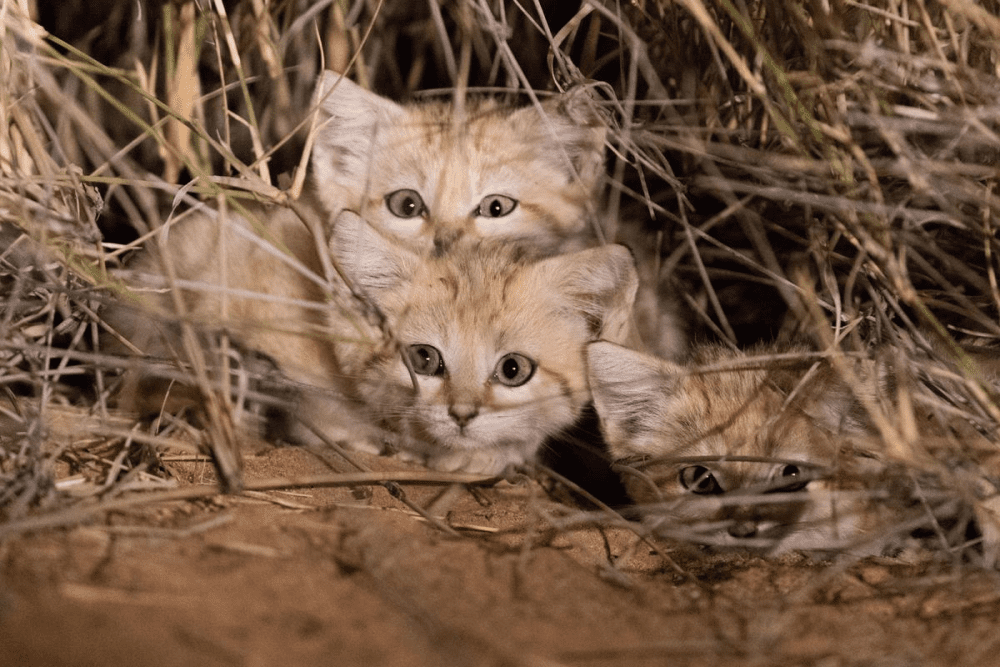Research into a tiny cat that lives in the Moroccan desert has revealed big things for the Felis genus. Not only are sand cats the title holders for the largest range in the genus, living a seemingly nomadic life, they’ve also exhibited a behavior never seen before in wild cats.
The nocturnal sand cat, Felis margarita margarita, is native to Africa’s Sahara Desert and the Arabian Peninsula. Animals were tagged in rural southern Morocco where scientists from Panthera and the Rabat and Cologne Zoos were hoping to investigate their ecology and home range.
The years-long research tagged a total of 22 sand cats with VHF collars between 2015 and 2019, revealing that their home ranges are vastly more extensive than expected. Despite having a body length of just 45 to 57 centimeters (18 to 22.5 inches), their home range rivals that of big cats like leopards and tigers.
One sand cat was recorded covering an astonishing 1,758 square kilometers (about 1,093 square miles) over 6.5 months. The researchers say this puts them at the top of the Felis genus for the largest range, toppling black-footed and African wild cats.
While only 22 cats were fitted with radio collars, they observed a total of 47 sand cats and captured 41. All of those they got a good look at were in great condition, with no wounds, few scars, and all their teeth intact. The researchers suggest this indicates that they live quite harmoniously and aren’t territorial, otherwise you would expect to see more signs of sand cat battles.
Even more intriguing was a behavior that’s not been seen among wild cats before. It seems they might not actually even have home ranges and instead live a nomadic lifestyle, which curiously moves with changing rainfall. If confirmed with further research, this would be a totally new behavior for wild cat species.

No other wild cat species have been found to move with the rain before. Image credit: Gregory Breton
Unfortunately, the confirmation of their enormous ranges indicates that there are probably fewer sand cats in the wild than previously expected. The scientists behind the discovery are therefore suggesting that their International Union for the Conservation of Nature (IUCN) “Least Concern” status be reconsidered, perhaps to “Near Threatened”.
So, it’s a lot of big news for one tiny cat, but we have much left to learn about these gorgeous animals.
“Our understanding of their ecology remains, however, limited and their social organization and mating pattern almost unknown,” wrote the study authors. “Important future research should focus on diet, overlying social organization and relatedness of sand cats, in relation with environmental conditions and anthropogenic factors.”
The study is published in the Journal of Arid Environments.
Source Link: Tiny Sand Cats' Huge Range Reveals Behavior Never Seen In Wild Cats